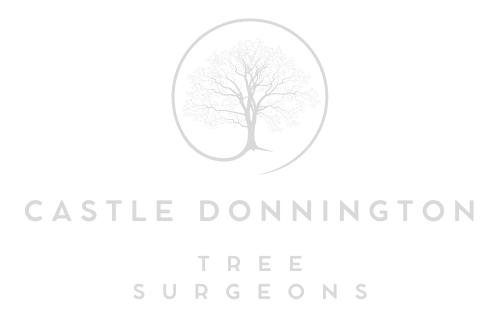Is Your Tree Leaning? Crown Reduction Might Help
Introduction
A leaning tree can be a cause for concern for any homeowner or landowner. Whether the lean has developed gradually or appeared after a storm, it often sparks the same questions: Is it dangerous? Will it fall? Should it be removed altogether? Fortunately, not every leaning tree needs to be felled. In some cases, a carefully executed crown reduction could offer a safe and effective solution.
At Castle Donnington Tree Surgeons, we’ve helped many clients across Castle Donnington and Leicestershire assess leaning trees and apply appropriate interventions. Crown reduction is one of the most valuable techniques in our toolkit, offering stability, improved aesthetics, and peace of mind. Let’s explore how and why it works.
Understanding Why Trees Lean
Before taking any action, it’s important to determine why your tree is leaning in the first place. Some trees naturally grow at an angle due to light competition or space constraints. Others may start to tilt over time because of structural issues, weakened roots, soil erosion, or storm damage.
Common causes of tree leaning:
- Soil movement or erosion, particularly after heavy rain
- Root damage or decay
- Uneven canopy weight distribution
- Previous pruning imbalances or storm-related stress
- Natural growth towards sunlight (phototropism)
Understanding the root cause helps inform the best solution, and that’s where professional assessment from Castle Donnington Tree Surgeons becomes essential.
What is Crown Reduction?
Crown reduction involves selectively removing branches from the outer edges and top of a tree’s canopy. The goal is to reduce the overall height or spread while maintaining a natural shape and preserving tree health. This method differs from topping (which is harmful) as it focuses on skilled, targeted pruning that respects the tree’s biology.
In the case of a leaning tree, crown reduction helps rebalance weight distribution, which can significantly reduce the stress placed on roots and the trunk, especially on the side where the tree leans.
How Crown Reduction Can Help a Leaning Tree
When a tree leans, its weight is disproportionately shifted to one side. This can increase the risk of further tilting or even uprooting in strong winds. Reducing the crown can alleviate some of this pressure, helping the tree stabilise itself without the need for removal.
Key benefits of crown reduction for leaning trees:
- Reduces canopy weight on the leaning side
- Lessens wind resistance and sway during storms
- Prevents further structural imbalance
- Helps the tree redirect growth in a safer, more upright manner
- Enhances safety without losing the tree completely
This approach is particularly effective for mature trees where full removal would be undesirable due to heritage value, environmental impact, or landscape aesthetics.
When Crown Reduction Is (and Isn’t) the Right Solution
While crown reduction offers many advantages, it’s not suitable for every leaning tree. Some trees lean because of extensive root decay or damage, in which case the structural integrity may already be compromised beyond saving. Similarly, young trees with flexible stems may require staking and training rather than pruning.
Ideal candidates for crown reduction:
- Mature trees with a full, heavy canopy
- Trees leaning due to uneven branch growth
- Trees with minimal to moderate root disruption
- Trees where the lean is stable, not increasing rapidly
At Castle Donnington Tree Surgeons, we assess each tree carefully to determine whether crown reduction is both safe and effective, ensuring long-term benefits for the tree and surrounding area.
Long-Term Maintenance and Monitoring
Even after a crown reduction, it’s important to continue monitoring your tree for signs of stress, new leaning, or decay. Trees are dynamic organisms, and their condition can change with the seasons or local environmental factors. With routine check-ups, a previously leaning tree can continue to thrive.
Tips for after-care:
- Schedule periodic inspections (especially after strong winds)
- Watch for changes in lean angle or soil cracking around the base
- Keep mulch clear from the trunk to reduce moisture issues
- Water in dry periods to help root recovery
Castle Donnington Tree Surgeons can provide ongoing care and maintenance schedules tailored to your tree’s needs, supporting its health for years to come.
Conclusion
A leaning tree doesn’t always mean disaster. In many cases, especially when caught early, professional crown reduction can provide the support and balance your tree needs to continue growing safely. It’s a practical alternative to removal and a valuable method of preserving the character and biodiversity of your outdoor space.
If you’ve noticed a tree leaning in your garden or on your property, don’t leave it to chance. Contact Castle Donnington Tree Surgeons for an expert assessment and find out whether crown reduction is the right approach. We’re here to ensure your trees remain safe, healthy, and an asset to your landscape in Castle Donnington and beyond.
Call us on: 01332 215 696
Click here to find out more about Castle Donnington Tree Surgeons
Click here to complete our contact form and see how we can help with your tree needs.

